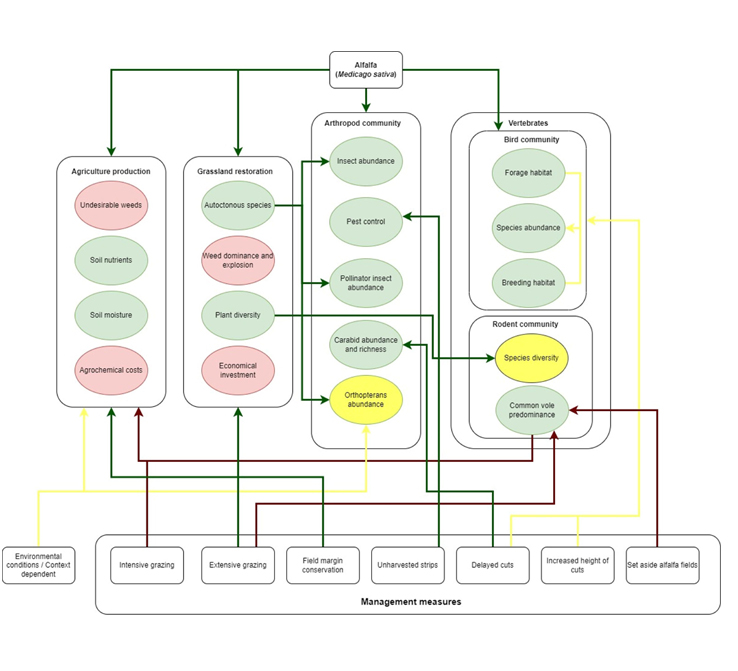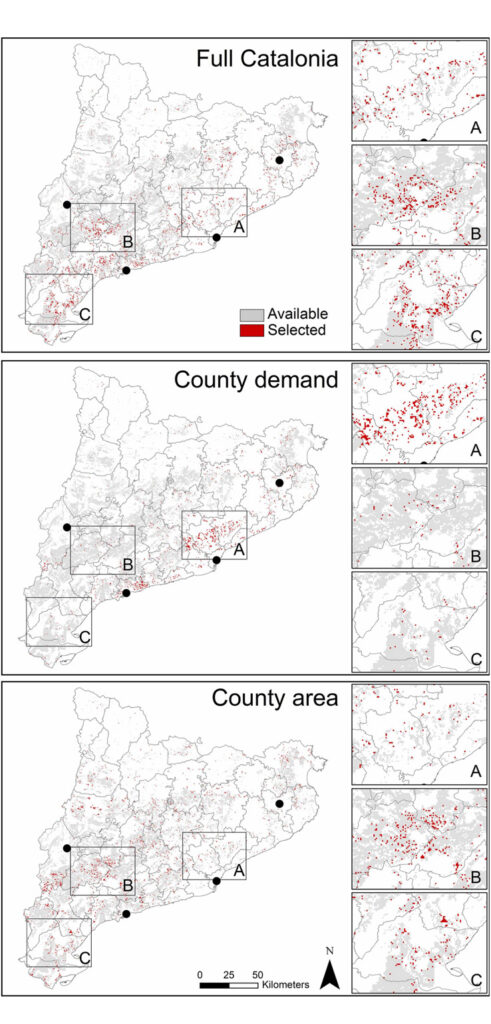
![]() July 2023
July 2023
The adequacy of alfalfa crops as an agri-environmental scheme: A review of agronomic benefits and effects on biodiversity
David Gónzalez del Portillo, Beatriz Arroyo, Manuel B. Morales
Agri-environmental programs are one of the mechanisms at the European level to combat agricultural intensification, including the inclusion of alfalfa in crop rotation. This literature review summarizes the information published up to date on the agronomic benefits of alfalfa and its relationship with biodiversity (plants, arthropods, and vertebrates).
According to the information presented, including alfalfa in crop rotations benefits biodiversity. However, its inclusion must be closely monitored to avoid possible adverse effects, such as pests or becoming an ecological trap.
Reference: González del Portillo, D., Arroyo, B., & Morales, M. B. (2022). The adequacy of alfalfa crops as an agri-environmental scheme: a review of agronomic benefits and effects on biodiversity. Journal for Nature Conservation, 126253.

Summary of the relationships between alfalfa cultivation (and its main management practices) and agricultural production and biodiversity, found in the literature. Green ellipses represent aspects favoured by alfalfa, while red ellipses represent aspects negatively affected by alfalfa. Arrows represent relationships (green if positive and red if negative). Yellow ellipses and arrows mean that the relationship can be positive or negative. If an arrow ends outside a box, the effect applies to all elements within it.










